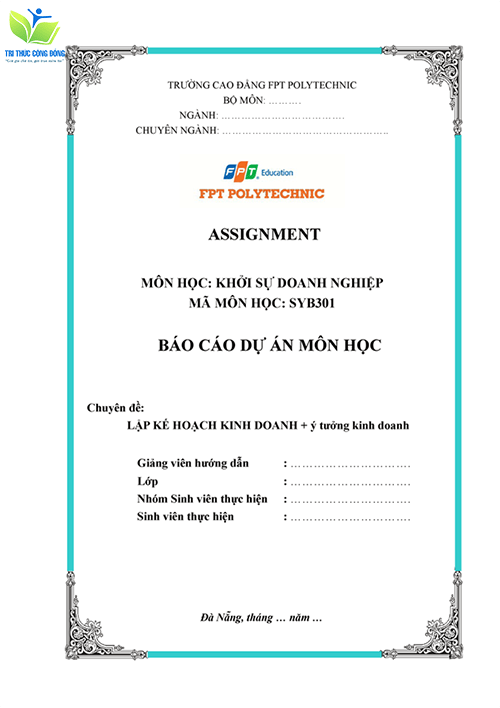Ngày nay, rất nhiều bạn du học sinh hoặc các bạn đang theo học tại các trường quốc tế phải làm bài viết assignment thường xuyên. Nhưng một vướng mắc rất hay gặp phải, đó là các học viên còn bỡ ngỡ, chưa quen cách viết bài chuẩn quốc tế. Do đó, Tri Thức Cộng Đồng sẽ chia sẻ các bài assignment mẫu và cấu trúc bài viết nhằm giúp bạn có thêm những thông tin và nguồn tham khảo hữu ích phục vụ cho bài luận của mình.
1. Bài assignment mẫu ngành marketing assignment

Các bài assignment mẫu chi tiết
Không thể phủ nhận được marketing là một môn học có tính thực tiễn cao, đó cũng là lý do các trường đại học trên thế giới đều chú trọng đến marketing assignment.
Dưới đây là bài assignment mẫu chuyên ngành marketing với chủ đề thú vị và bài viết mang tính phổ biến cao.
- Tên đề tài
“Analysis of microenvironment and macro environment consist of many important frameworks such as SWOT, PESTEL analysis in ALDL company in Australia.”
- Tóm tắt nội dung bài viết:
The marketing audit is a significant element of marketing activities and evaluating the microenvironment and macro environment is an important aspect of it. Analysis of microenvironment and macro environment consists of many important frameworks such as SWOT analysis, PESTEL analysis, etc. In this manner, ALDI is the company that is chosen for the analysis. ALDI is a leading grocery chain in Australia that is famous for serving grocery products at a cheaper price (ALDI, 2015).

Marketing assignment sample
Link download: Tại đây
2. Bài assignment mẫu “Human resource management assignment sample”
Quản trị nhân lực đang là một trong những ngành đào tạo thu hút rất nhiều học viên trên toàn cầu. Mỗi bài luận trong ngành muốn đạt được điểm cao phải có đề tài nổi bật và nội dung với điểm nhấn riêng.
Hãy tham khảo bài luận Human resource management assignment dưới đây:
- Tên đề tài:
“Give opinion about the influence of human resource management in organization objective”
- Tóm tắt nội dung bài viết
Human resource management includes the development and implementation of HR strategies. These strategies are integrated with business strategies and enable the organization to achieve its business goals. In other words SHRM is the process of integrating human resource functions with the strategic objectives of the organization in order to achieve organizational goals. Human resources are the real capital of the organization as it not only helps in achieving organizational goals but also provides innovative ideas which can change the entire business process. In order to achieve its objectives an organization has to take optimum utilization of its human resources by framing strong human resource management strategies.

Human resource management sample
Link download tài liệu: Tại đây
3. Bài assignment mẫu “Strategic human resource management assignment sample”
Là một chuyên ngành mở rộng của quản trị nhân lực, các bài tập trong quản trị nhân lực chiến lược cũng có yêu cầu riêng biệt.
Để nhấn mạnh được sự đặc sắc của bài Strategic human resource management assignment, bạn có thể tham khảo chủ đề cũng như cách viết bài dưới đây của Tri Thức Cộng Đồng.
- Tên đề tài:
“Application of strategic human resource management in compensation plans”
- Sơ lược nội dung
The strategic human resource management sample involves setting compensation plans and assessing competitive pay practice. The management down to focus on the management assignment. Some readers assert both the IC is urgent like other organizations and that behavioral science knowledge that alters the effective functioning of business organizations is not commonplace to the IC because comfort is so uniquely different.

Strategic human resource management sample
Download miễn phí tại: Tại đây
4. Bài assignment mẫu “International business”
Một bài International business assignment sample từ Tri Thức Cộng Đồng nhận được rất nhiều lời đánh giá tích cực từ giảng viên chấm bài.
- Tên đề tài:
“Demonstrate the international business plan in a particular enterprisers”
- Tóm tắt bài luận
The main section of this report is the final business strategies where the business entry process is at the pinnacle. Considering all revealed information, the Joint Venture was selected as the entry mode of choice supported by business strategies concerning internationalization, location, staffing and marketing.
International Business is a fascinating subject with many interesting factors to be considered before even finalizing the business strategies. Therefore completing this consultant’s report successfully has given the author key learning points where he has enjoyed thoroughly while using all the knowledge gained to churn out a very successful report with valid points to be considered.

International business assignment sample
Tải assignment tại đây: Tại đây
5. Bài assignment mẫu “International business management 2”
Quản trị kinh doanh quốc tế cũng là một ngành có số lượng người theo học nhiều đáng kể. Hãy tham khảo bài International business management assignment sample sau đây để giúp assignment của bạn thêm ấn tượng.
- Tên đề tài:
“Statement of purpose for International business management”
- Tổng quan assignment:
Studying these subjects at a higher level has further expanded my knowledge in various areas. However, all of that knowledge I have learned was just theoretical. Now, I want to learn further and truly be able to make good use of everything that I have learned and everything that I will be learning, through a comprehensive study of International Business Management.

International business management assignment sample
Link tải bài mẫu: Tại đây
6. Bài assignment mẫu “Business ethics”
Bài Business ethics assignment sample do Tri Thức Cộng Đồng nghiên cứu và sưu tầm được như sau:
- Tên đề tài:
“Analysis the impact of the business ethics in the corporate environment.”
- Nội dung bài luận:
The dictionary defines corporate responsibility as: “…is a form of corporate self-regulation integrated into a business model… essentially, CSR is the deliberate inclusion of public interest into corporate decision-making, and the honoring of a triple bottom line: People, Planet, Profit. ” Put more simply, corporate social responsibility or often called just corporate responsibility (CR) is a concept which states that all businesses operate with a certain predetermined goal such as maximizing profits or shareholder wealth etc.

Business ethics assignment sample
Download bài mẫu: Tại đây
7. Bài assignment mẫu “Leadership”
Chủ đề Leadership cũng là một trong những chủ đề được nhiều thầy cô giao bài tập, Tham khảo ngay bài Leadership assignment sample dưới đây để có thêm ý tưởng cho riêng mình.
- Tên đề tài
“Apply the theory of Leadership and Management Development to resolve the issue in a particular enterprise.”
- Khái quát nội dung
Leadership and management training is very essential for the success of an organization. Leaders are very important in the organization as they are helpful in motivating and inspiring employees. On the other hand, managers are helpful in preparing plants, coordinating projects and organizing which is very essential in achieving the organizational goals and objectives. Managers are responsible for constitution selection and recruitment of candidates who possess skills which will help the organization to grow.

Leadership assignment sample
Tham khảo tại đây: Tại đây
8. Bài assignment mẫu về principle of management assignment
Một nhánh khác nữa cũng rất phổ biến và được nhiều thầy cô lựa chọn để đưa ra các bài tập đó là nguyên tắc quản trị.
Cùng tìm hiểu bài mẫu về Principle of management assignment của Tri Thức Cộng Đồng sau.
- Tên đề tài:
“Demonstrate and explain about 8 principles of management assignment.”
- Nội dung sơ lược:
Management principles are statements of fundamental truth. These principles serve as guidelines for decisions and actions of managers. They are derived through observation and analysis of events which managers have to face in practice.
The assignment demonstrates and explains particularly about one of eight principles of management assignment.

Principle of management assignment
Tải bài tham khảo: Tại đây
9. Cấu trúc bài assignment mẫu hoàn chỉnh
9.1. Table of content
Introduction
Title: Non-verbal communication and some differences in Non-verbal communication of Viet Nam and America
Reasonable
Definition of Intercultural Communication
Development
- Definition of Intercultural Communication
- Definition of non-verbal communication
- Some differences in Non-verbal communication of Viet Nam and America
Conclusion
References

Chia sẻ bài assignment mẫu chi tiết nhất – Dowload free assignment
9.2. Introduction
- Title: Non-verbal and some differences in Non-verbal communication of Vietnamese and American
- Reasonable
Being a student of English faculty, so I always desire to learn other countries’ cultures as much as I can. Through Intercultural communication, one of my favorite subjects at university, I have known custom, communication ways, the viewpoint of many countries, many groups of people. In this subject I concern most is non-verbal communication. It is a kind of language that people use to communicate, transfer information… This kind of language is as effective as words- maybe even more effectively. We use it in daily life, almost instinctively, from beckoning to a waiter or punctuating a business presentation with visual signals to airport ground attendants guiding an airline pilot into the jetway or a parent using a whole dictionary of gestures to teach (or preach to) a child…
From these things above, I found that non-verbal communication is indispensable way to communicate among people and people in the world. And each country has its non-verbal communication with their own meanings. So I make this study in order to understand much more about the differences between non-verbal of Vietnamese and American, to know how people of two countries express their information, emotion,… through non-verbal language.
Nhằm giúp tiết kiệm thòi gian, công sức của bạn để hoàn thành bài luận, hãy sử dụng dịch vụ nhận làm luận văn thạc sĩ tp hcm của Tri Thức Cộng Đồng.
9.3. Development
1. Definition of Intercultural Communication
Culture
– Shared background (Eg: national, ethnic, religious…) reflection a common language and communication style. Shared customs, beliefs, attitudes, and values.
– Culture mentioned here does not refer to art, music, literature, food, clothing style…
– Culture refers to the informal and often hidden patterns of human interactions, expressions, and viewpoints that people in one culture share.
– The hidden nature has been compared to iceberg, most of which is hidden under water.
– Like the iceberg, most of the influence of culture on an individual cannot be seen
– The hidden aspects of culture have significant effects on behavior and on interactions with others
Communication
– The process of sharing meaning through verbal and non-verbal communication/behavior
Intercultural communication is communication between people from different cultures.
– Communication is influenced by cultural values, attitudes, and behavior. The influence of culture on people’s reaction and response to teach other.
Intercultural communication is:
– Communication between people from different cultures.
– Communication which is influenced by cultural values, attitudes, and behavior.
– The influence of culture on people’s reactions and responses to each other.
2. Definition of non-verbal communication
Non-verbal communication express meaning or feeling without words. Universal emotions, such as happiness, fear, and sadness, are expressed in a similar non-verbal way throughout the world. There are, however, non-verbal differences across cultures that may be a source of confusion for foreigners.
Nonverbal communication involves those nonverbal stimuli in a communication setting that are generated by both the source [speaker] and his or her use of the environment and that have potential message value for the source or receiver [listener] (Samovar et al). Basically it is sending and receiving messages in a variety of ways without the use of verbal codes (words). It is both intentional and unintentional. Most speakers / listeners are not conscious of this. It includes — but is not limited to:
– touch
– eye contact (gaze)
– volume
– vocal nuance
– proximity
– gestures
– facial expression, pause (silence)
– intonation
– dress
– posture
– smell
– word choice and syntax
– sounds (paralanguage)
Broadly speaking, there are two basic categories of non-verbal language:
- Nonverbal messages produced by the body;
- Nonverbal messages produced by the broad setting (time, space, silence)
Why is non-verbal communication important?
Basically, it is one of the key aspects of communication (and especially important in a high-context culture). It has multiple functions:
- Used to repeat the verbal message (e.g. point in a direction while stating directions.
- Often used to accent a verbal message. (e.g. verbal tone indicates the actual meaning of the specific words).
- Often complement the verbal message but also may contradict. E.g.: a nod reinforces a positive message (among Americans); a “wink” may contradict a stated positive message.
- Regulate interactions (non-verbal cues covey when the other person should speak or not speak).
- May substitute for the verbal message (especially if it is blocked by noise, interruption, etc) — i.e. gestures (finger to lips to indicate need for quiet), facial expressions (i.e. a nod instead of a yes).
Note the implications of the proverb: “Actions speak louder than words.” In essence, this underscores the importance of non-verbal communication. Non-verbal communication is especially significant in intercultural situations. Probably non-verbal differences account for typical difficulties in communicating.
3. Some differences in non-verbal communication of Vietnam and America
Gestures
Impossible to catalog them all. But need to recognize: 1) incredible possibility and variety and 2) that an acceptable in one’s own culture may be offensive in another. In addition, amount of gesturing varies from culture to culture. Some cultures are animated; other restrained. Restrained cultures often feel animated cultures lack manners and overall restraint. Animated cultures often feel restrained cultures lack emotion or interest.
Even simple things like using hands to point and count differ.
In US:
Americans will often wave to another person and then turn to make hand scoop inward; or raise the index finger ) palm toward one’s face, and make a “curling ” motion with that finger means to beckon or summon another person.
Arm raised and the open hand “waggles” back and forth means Signaling “hello” or “good-bye.” Or trying to get someone’s attention.
Palm facing out with the index and middle fingers displayed in the shape of a “V.”- “Victory” or “peace.”
Thumb and forefinger form a circle with the other three fingers splayed upward; it is used frequently and enthusiastically. “O.K.” meaning “fine” or “yes.”
Thumb up with a close fist means support or approval, “O.K.” or “Good Going!” or “Good job!”
Fist raised with index finger and little finger extended. Texas rallying call “hook ’em horns.” Baseball meaning “two outs.”
Extend the forefinger and make a circular motion near the temple or ear. Something or someone is “crazy.”
In Viet Nam:
Custom of shaking hands is the customary form of greeting, but often nod of the head or slight bow is sufficient.
Waving hands is not really common with old people in Viet Nam, but opposite to young people , wave hands is very common and friendly way when say goodbye to their friends.
Thumb and forefinger form a circle with the other three fingers splayed upward also used by Vietnamese people to give signal or it mean “good”, “great”…
“V” showed by forefinger and middle finger mean “victory” or “hi”, “hello”
General Appearance and Dress
All cultures are concerned for how they look and make judgements based on looks and dress.
America:
Americans appear almost obsessed with dress and personal attractiveness. Consider differing cultural standards on what is attractive in dress and on what constitutes modesty.
Attending to a wedding, Women like to wear bright or colorful dresses. Popularly, men choose comple.
America often wears dark or black stuffs when they take part in an one’s funeral.
Vietnam:
There are 54 ethnic groups in Viet Nam. Each of them has their own dress style, for instance, women of Gia Rai group usually wear nothing but a small skirt, and men would take just a loin-cloth to go on any occasion. On special times like tet days, The H’Mông girls wear a shirt, undergarments, leggings and put on a coiled scarf on their head. Their skirts are usually in cone shape with lots of folds that enhance their gentleness. People of the subgroups in the Dao minority share many similarities while at the same time are a little bit distinct from each other. Girls in the Dao Đỏ (Red Dao) keep their hair long and fold them around their heads covered with a red cloth. They wear indigo dress embroiled with decorations in red…
In the wedding, Kinh ethnic (Viet people) wear bright clothes and bless bride and groom happily. In contrast, Vietnameses often clothe dark or black stuffs in one’s funeral to show their respectation to the death and sympathy with dead’s family members. Dead’s son/daughter wear a weeper on forehead and a small long white cloth to go into mouring their dad/mom or grand mother/ father.
Posture
Consider the following actions and note cultural differences:
Bowing : American people do not make their bow to their partner because in American culture bowing is a sign of submission, the admission that another person is superior to you. But incontrast Vietnamese young people usually make their bow to older people when greeting expressing respect to old people.
Sitting with legs crossed : in Viet Nam, it is acceptable to sit with you legs crossed when you meet your friends or peer people. Eventually, in a meal including young and old persons, guys can sit with legs crossed, it’s acceptable. To Americans, male sit crosses at the ankles; rest ankle of one leg on top of the knee of the other leg; some cross the legs at the knees.
female sit crosses the legs at the knees; crosses the legs at the knees and curls the upper foot around the calf of the lower leg.
Facial expressions
While some say that facial expressions are identical, meaning attached to them differs. Majority opinion is that these do have similar meanings world-wide with respect to smiling, crying, or showing anger, sorrow, or disgust. However, the intensity varies from culture to culture. Note the following:
Viet Nam:
People exaggerate grief or sadness.
U.S:
Most American men hide grief or sorrow.
Eye Contact and Gaze
In USA:
Eye contact indicates: degree of attention or interest, influences attitude change or persuasion, regulates interaction, communicates emotion, defines power and status, and has a central role in managing impressions of others.
American children are taught to look others directly in the eyes meaning when greeting and conversing. If not, means shyness or weakness. African-Americans use more eye contact when talking and less when listening with reverse true for Anglo Americans. This is a possible cause for some sense of unease between races in US. A prolonged gaze is often seen as a sign of sexual interest.
In Viet Nam:
Direct eye contact and staring is uncommon in those areas accustomed to foreign visitors. However, in smaller communities, visitors may be the subject of much curiosity and therefore you may notice some stares. But when speaking face to face to a person, you should use direct eyes to show your respect and truthfulness.
Touch
Question: Why do we touch, where do we touch, and what meanings do we assign when someone else touches us?
Basic answer: Touch is culturally determined! But each culture has a clear concept of what parts of the body one may not touch. Basic message of touch is to affect or control — protect, support, disapprove (i.e. hug, kiss, hit, kick).
In U.S:
Handshake is common (even for strangers) in U.S. Shake hands is a polite way to greeting. At early age they are taught to do so with a firm, solid grip When greeting one another.
Giving hugs, kisses for members of family or relative or friends is on an increasingly more intimate basis.
Native Hawaiians hug and exchange breaths in a custom called “aha.”
Most African Americans touch on greeting but are annoyed if touched on the head (good boy, good girl overtones).
Americans see that is very weird if people of the same sex hold hands in public places.
Personal space becomes much larger; people are not as comfortable when others stand close to them, especially if they are not very well acquainted.
In Viet Nam:
Touching one’s head means impolite but with children that action express encourage them. But a special reason is Asians’ thought Head houses the soul and a touch puts it in jeopardy.
Hugging and kissing when greeting are uncommon. Especially, in public it’s unacceptable to display of affection like kiss or hug or any action that too affectionate.
People of the same sex may be seen holding hands in public places, which is simply a gesture of friendship.
If 2 people meet the first time they keep the distant not too far but not so closely. But when 2 people are friends or relative , they stand close or touch to each other.
Cultures (English , German, Scandinavian, Chinese, Japanese) with high emotional restraint concepts have little public touch; those which encourage emotion (Latino, Middle-East, Jewish) accept frequent touches.
>> Xem thêm: Research paper là gì? Chia sẻ kiến thức tổng quan về Research Paper dành cho người mới
9.4. Conclusion
To sum up, As the global village continues to shrink and cultures collide, it is essential for all of us to become more sensitive, more aware, and more observant to the myriad motions, gestures, and body language that surround us each day. And as many of us cross over cultural borders, it would be fitting for us to respect, learn, and understand more about the effective, yet powerful “silent language” of body language.
9.5. References
- http://www.csupomona.edu/~tassi/gestures.htm
- http://www.associatedcontent.com/article/22546/the_culture_of_body_language.html?cat=4
- http://anthro.palomar.edu/language/language_6.htm
- http://www.bodylanguageexpert.co.uk/BodyLanguageAcrossCultures.html
- http://www.andrews.edu/~tidwell/lead689/NonVerbal.html
- http://www.natively.com/_sys/EN/NativelyAcademy_ussen_v6a_en.asp?lp=usen&af=VEL_en_7236827_1783619
- http://www.medhunters.com/articles/bodyLanguageAcrossCultures.html
- http://en.wikipedia.org/wiki/Language#Language_and_Culture
Với bài assignment mẫu bên trên, hi vọng rằng bạn sẽ có thể phần nào áp dụng để viết bài assignment của mình. Chúc bạn thành công

 26 Tháng 8, 2025
26 Tháng 8, 2025 Share
Share









